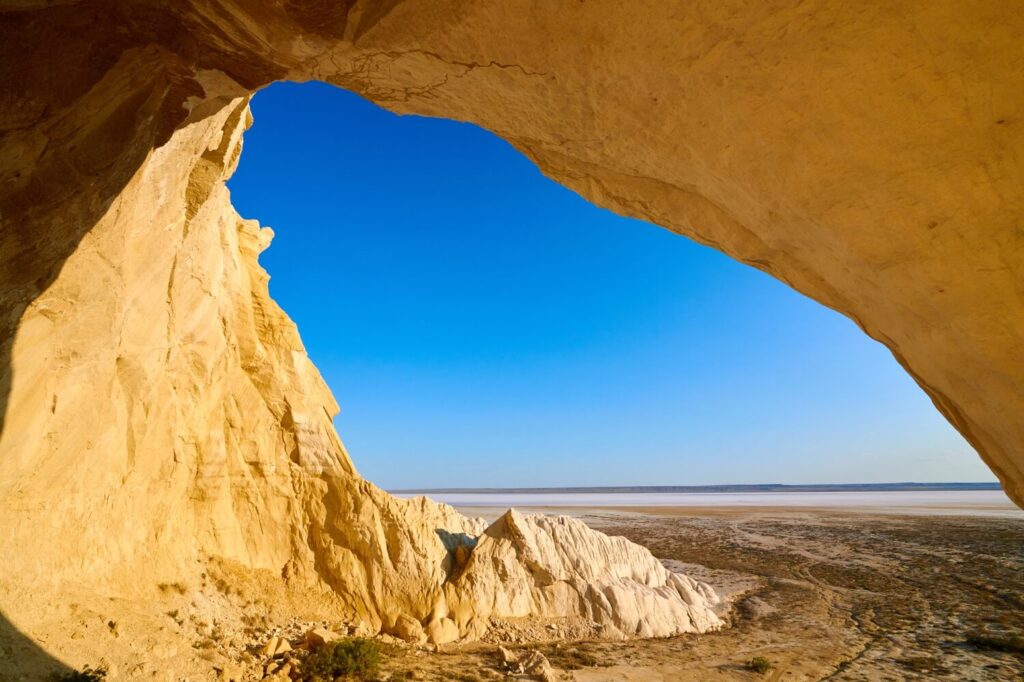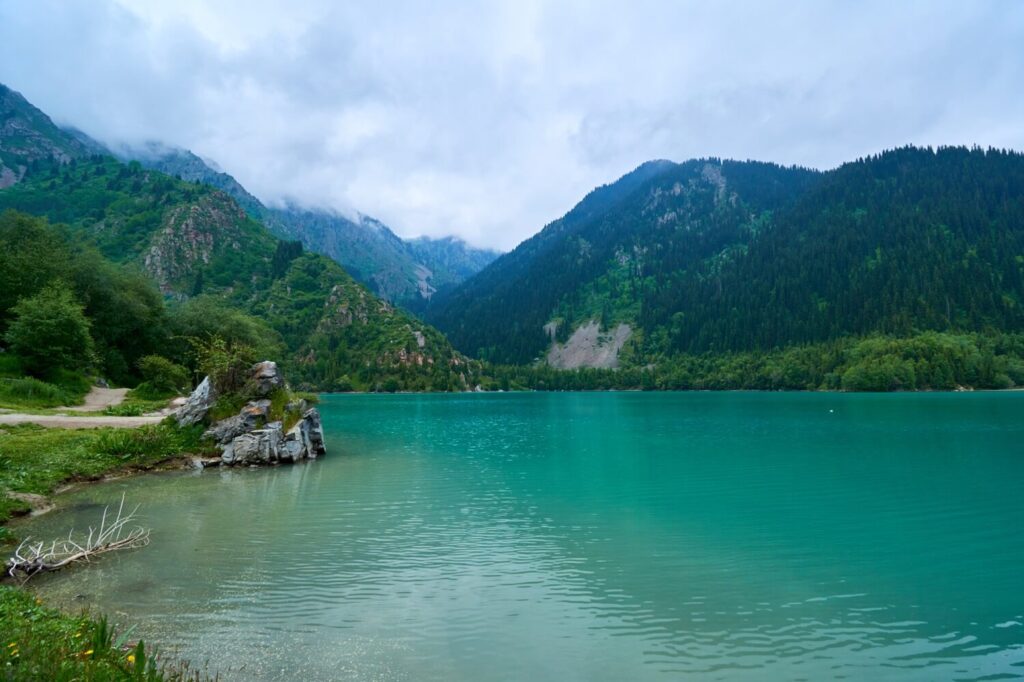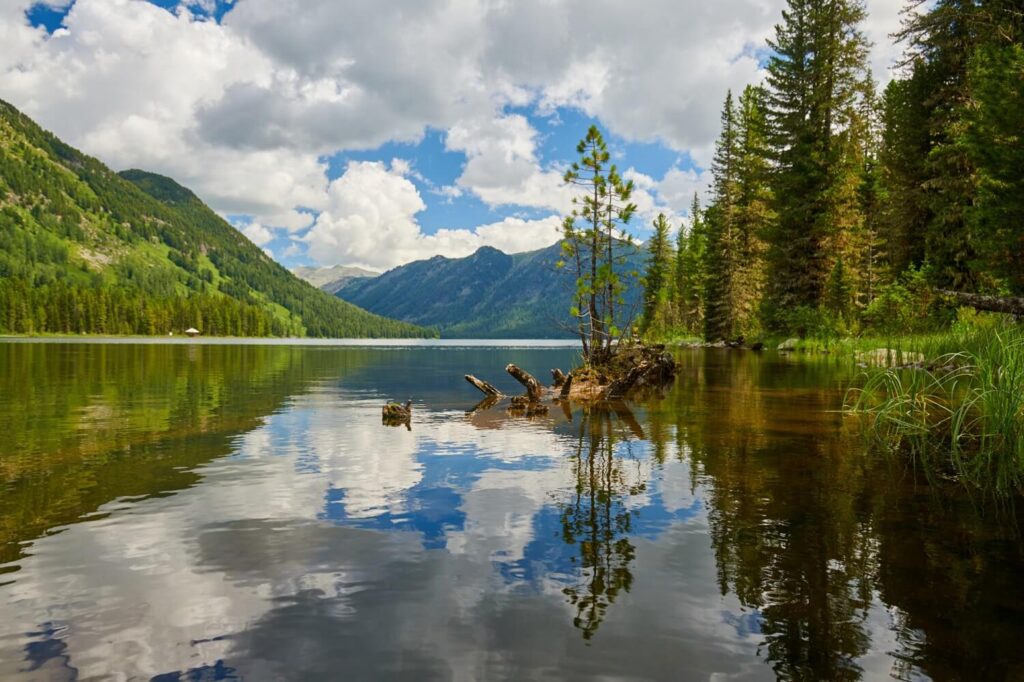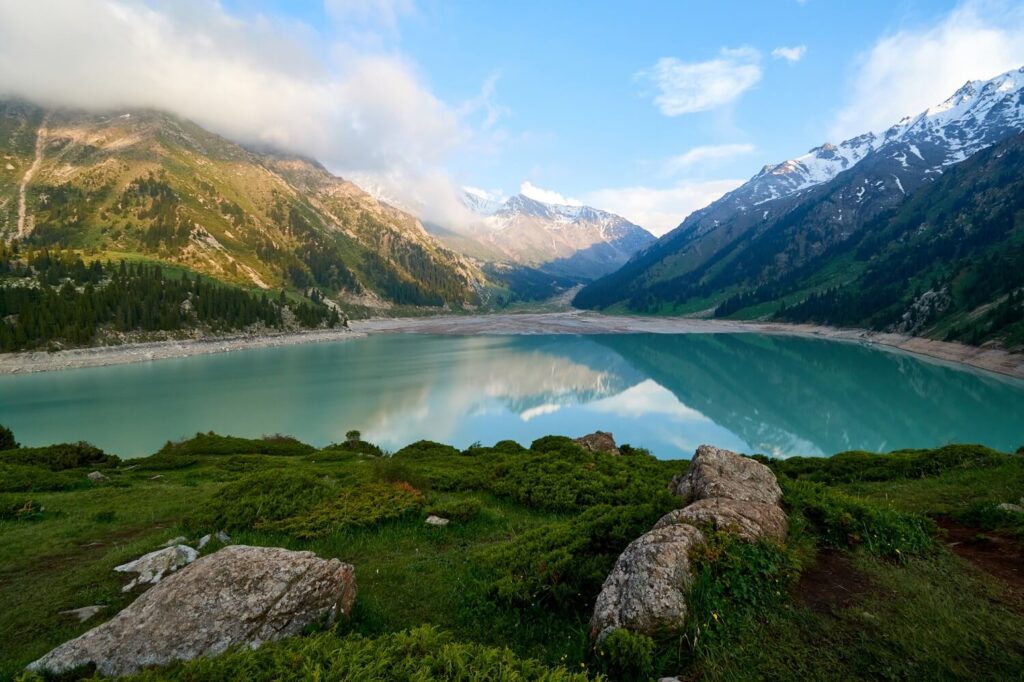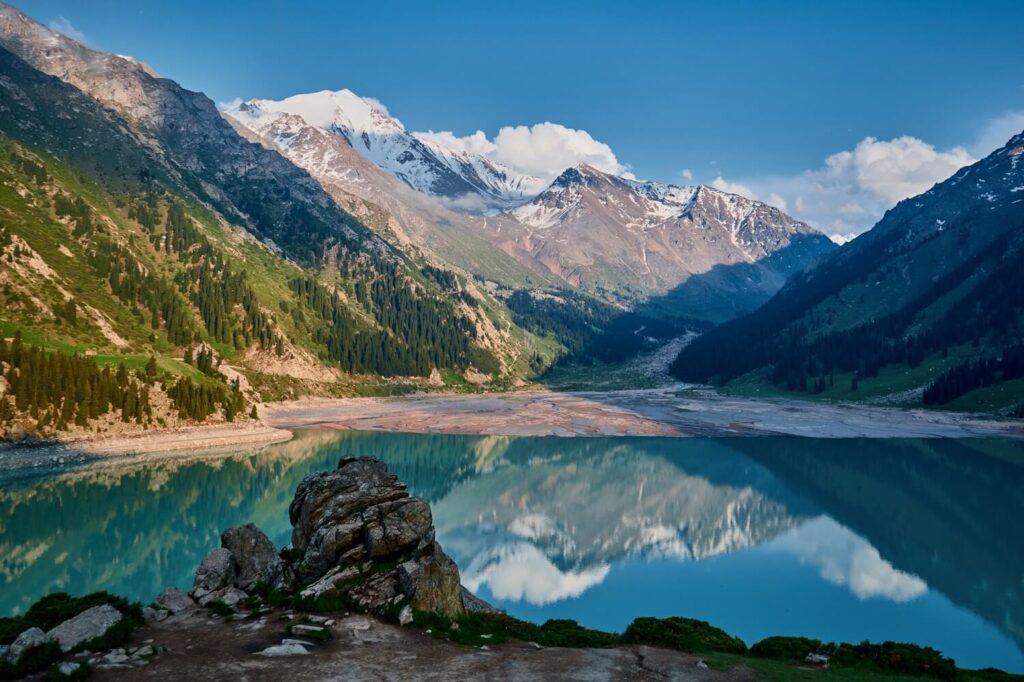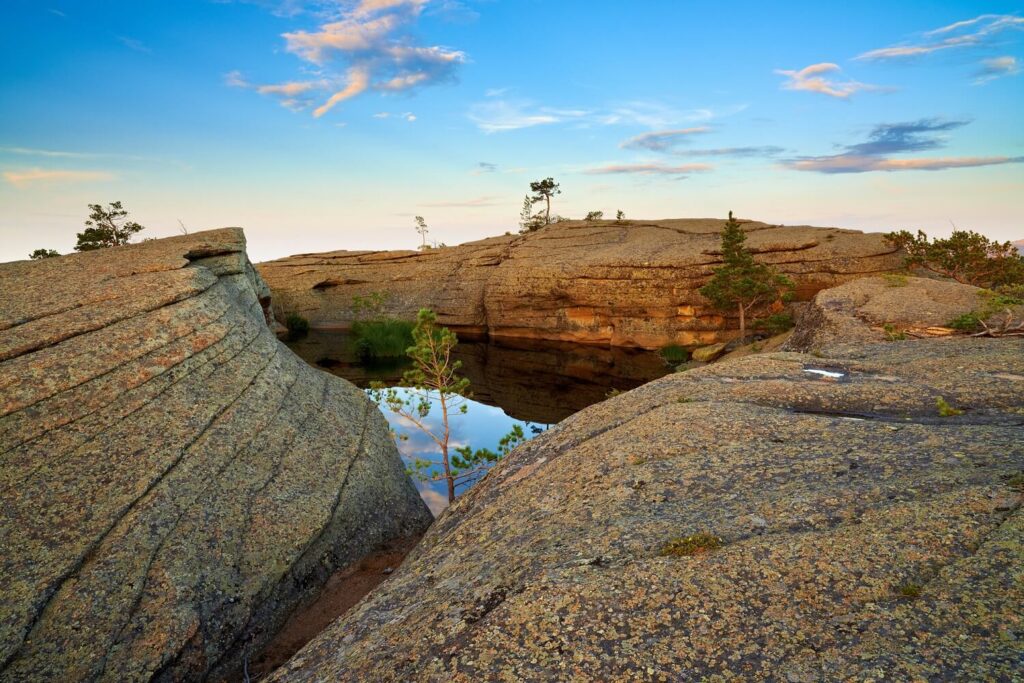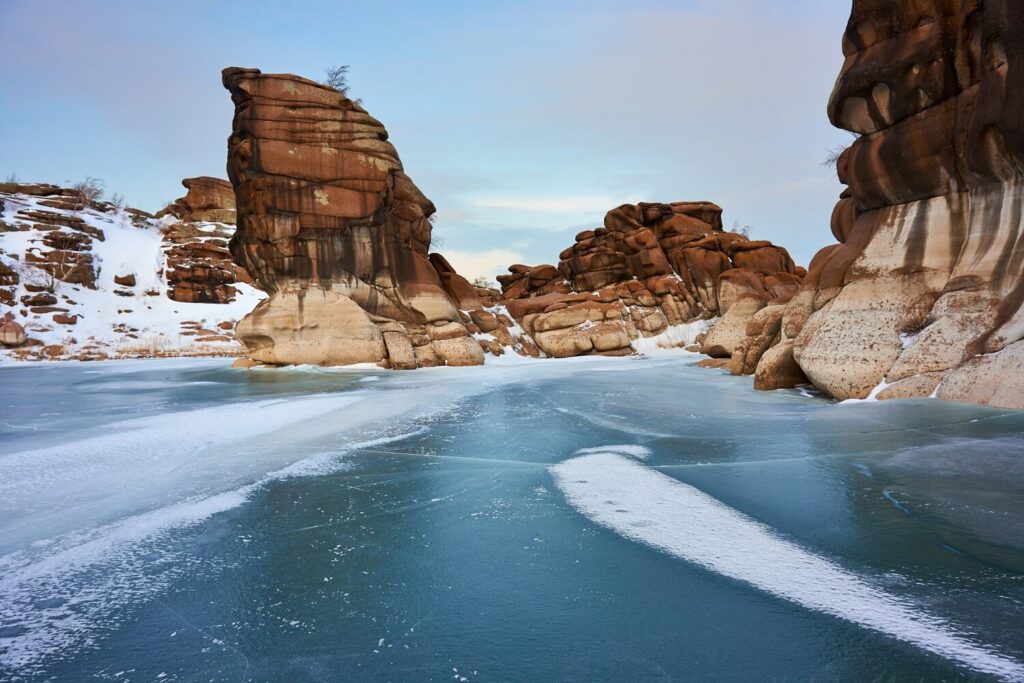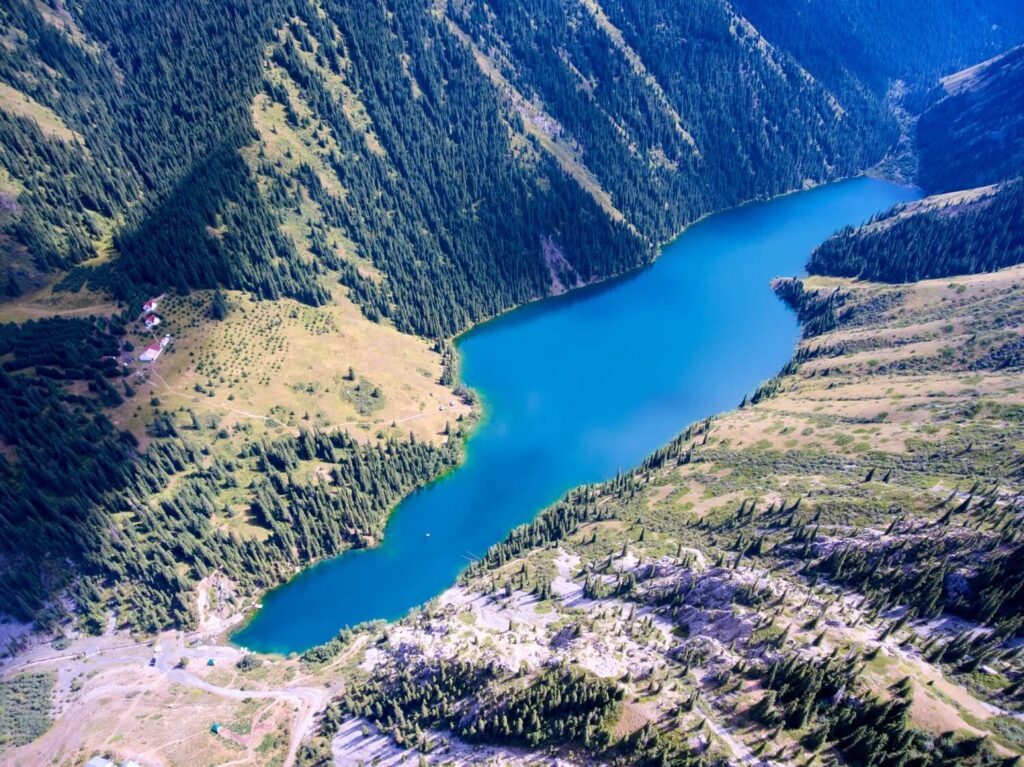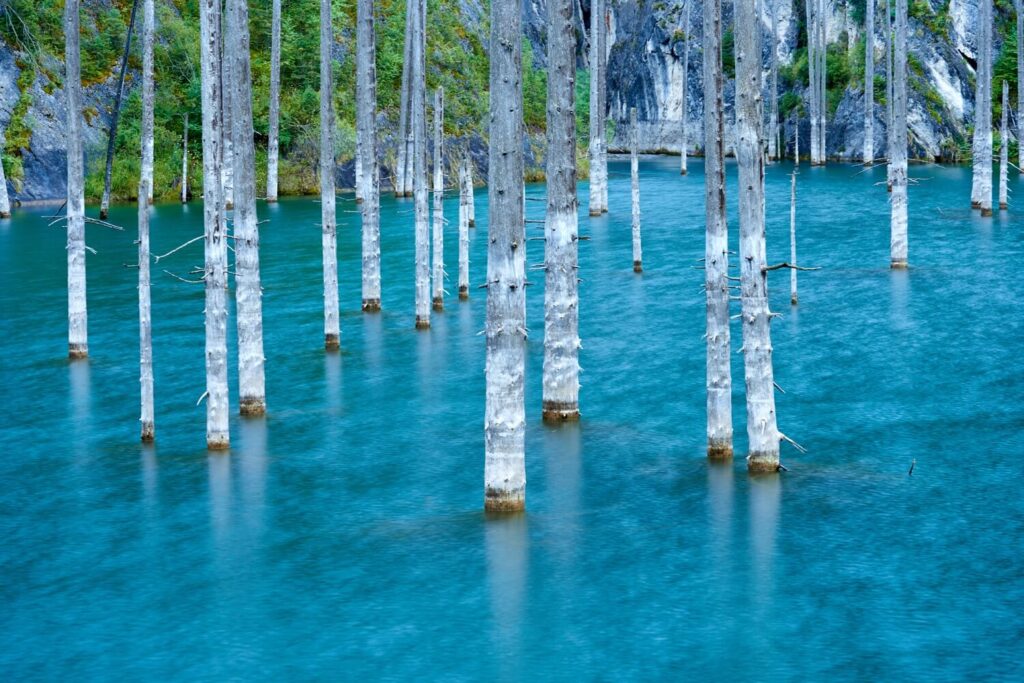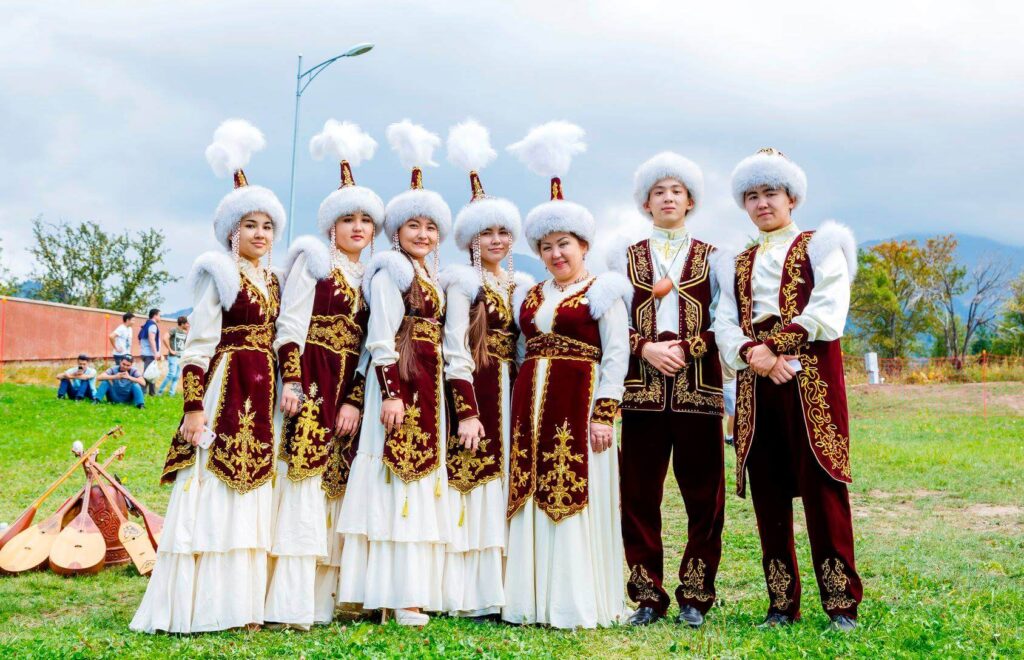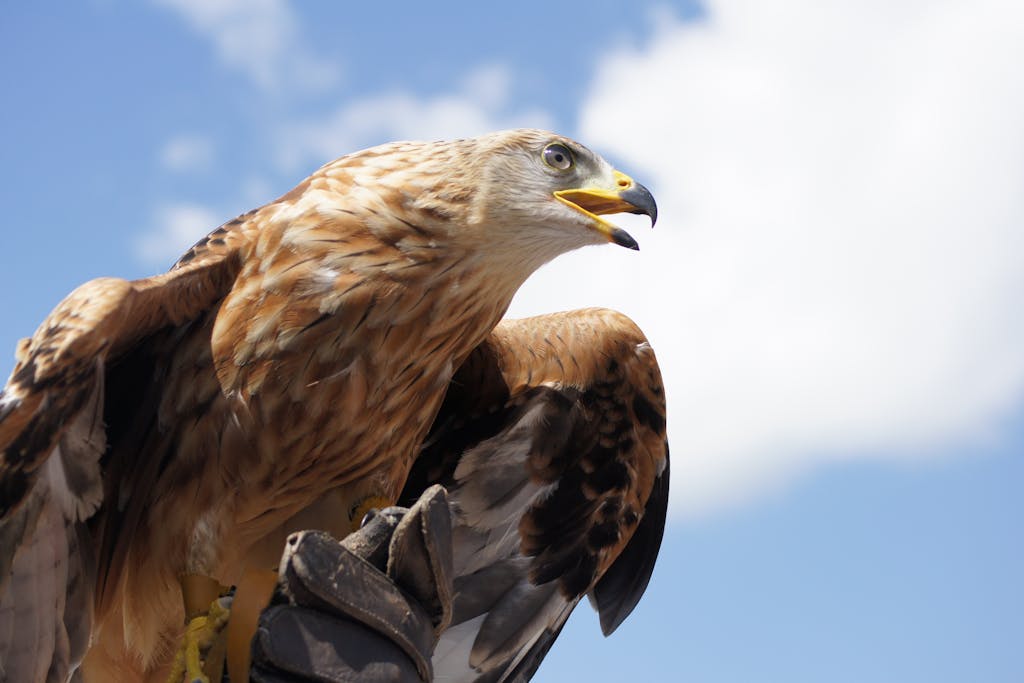Climb Khan Tengri
Overview:
Khan Tengri is a giant mountain in the Tien Shan mountain range. It is located on the border of China, Kyrgyzstan and Kazakhstan, east of Lake Issyk-Kul. With a geological height of 6,995 m (22,949 ft), Khan Tengri is a massive marble pyramid covered in snow and ice.
In mountaineering circles it is considered a 7,000-metre peak, one of the highest in the Tien Shan.
The name “Khan Tengri” means “King Heaven” in Kazakh and “King Sky” in Mongolian. It may refer to the deity Tengri, who is important in pagan Tengrism and Central Asian Buddhism.
Locals call the mountain ‘Khan Tangiri Shyngy’, ‘Kan-Too Chokusu’, ‘Pik Khan-Tengry’ and ‘Hantengri Feng’ in various local languages.
Khan Tengri is a stunner. At sunset the marble glows red and is known as “Blood Mountain” in Kazakh and Kyrgyz. It’s symmetrical ridges and geometric shape make it one of the most beautiful peaks in the world, according to Russian mountaineer Anatoli Boukreev.
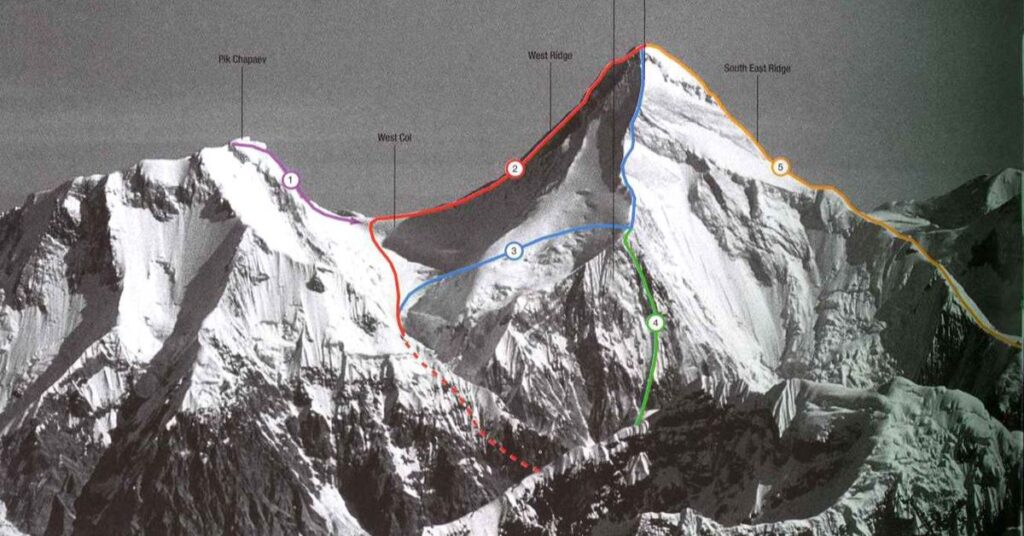
Historically Khan Tengri was thought to be the second highest mountain peak in the Tian Shan range until Jengish Chokusu was surveyed in 1943 and found to be higher.
The first ascent of Khan Tengri was made in 1931 by Mikhail Pogrebetsky’s Ukrainian team from the summit of peak south side in Kyrgyzstan. Since then it has been a popular destination for mountaineers and climbing Khan Tengri is considered a major tick.
Khan Tengri is one of the five peaks that must be climbed to earn the Snow Leopard award in the Soviet mountaineering community.
Best time to climb Khan tengri is mid-July to end of August, as it’s the northernmost 7,000 metre peak in the world. But be aware that peaks at high latitudes have a shorter climbing season, harsher weather and thinner air.
North side of Khan Tengri is considered the safest to climb, minimal avalanche risk and VHF radio communication throughout the route.We offer guided expeditions and support. Expeditions include acclimatisation periods and different routes to the summit, like the classical route from the west ridge to north side of the mountain.
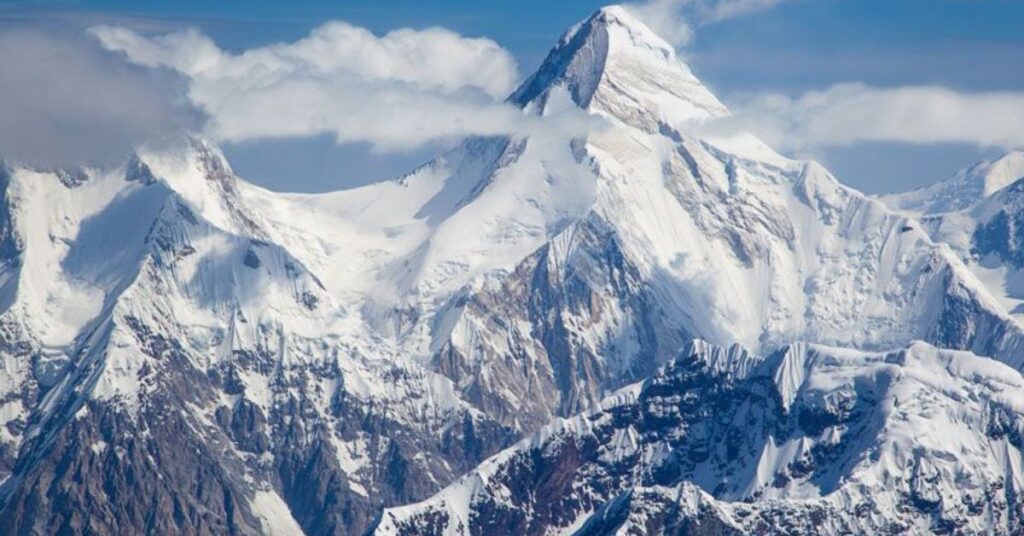
But climbing Khan Tengri is a technically difficult activity and climbers should have previous experience at high altitude guide, and be self-sufficient in high mountain environments.
As well as rock climbing, there are trekking opportunities in the Khan Tengri region central asia, like the trek to the base camp of the South Inylchek Glacier. These treks offer stunning views of the surrounding mountains and glaciers.
Please note that climb Khan Tengri and participating in any mountaineering expedition is physically demanding and carries inherent risks. It is essential to be well prepared, well equipped and have a thorough understanding of mountaineering skills and safety procedures.
It is also advisable to consult experienced guides and tour operators before embarking on any climbing or trekking adventure in the Khan Tengri region.
Risks and Challenges
Climbing Khan Tengri Peak is not for the faint of heart. The route is high altitude, exposed ridges and steep slopes and can be affected by bad weather, crevasses and rockfall. To manage these risks you must:
- Hire experienced guides and porters who know the terrain and weather.
- Use good quality climbing gear, high altitude tents, ice axes and fixed ropes.
- Do a risk assessment and contingency planning.
- Monitor weather forecasts and be prepared to change the itinerary.
- Make sure all team members are physically and mentally prepared for the climb.
By doing all this you can reduce the risks and increase the success and safety of the climb.
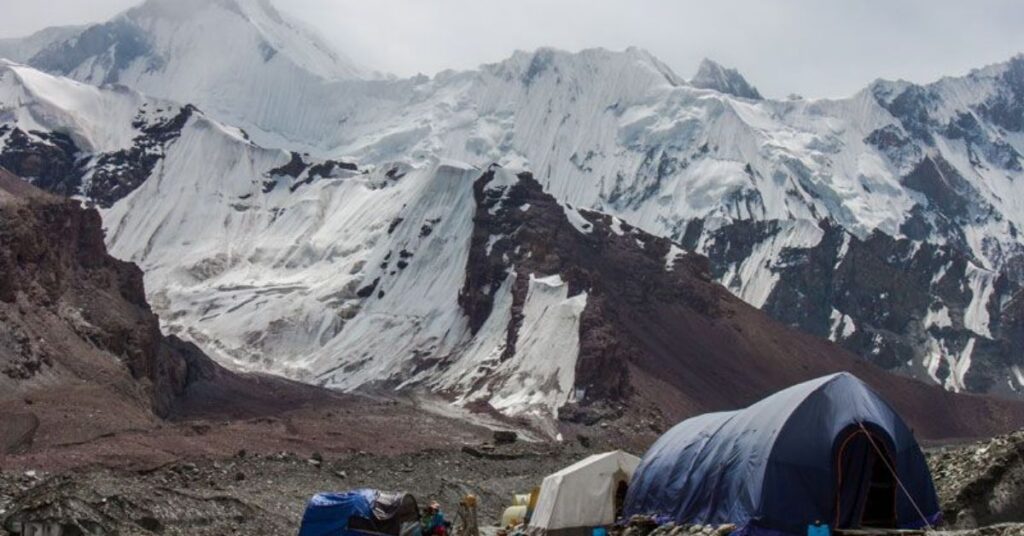
Bad Weather
Bad weather and poor visibility is a big risk when climbing Khan Tengri Peak. The mountain is known for its unpredictable weather and can include snowstorms, high winds and low visibility. To deal with bad weather you must:
- Monitor weather forecasts regularly and change the itinerary.
- Carry emergency shelter and communication equipment, satellite phone and portable stove.
- Have a contingency plan for emergency situations, including evacuation procedures.
- Make sure all team members have warm and waterproof clothing, crampons and ice axes.
- Consider using fixed lines and ropes to secure the route and prevent falls.
By being prepared and flexible you can minimise the risks of bad weather and have a successful and safe climb.
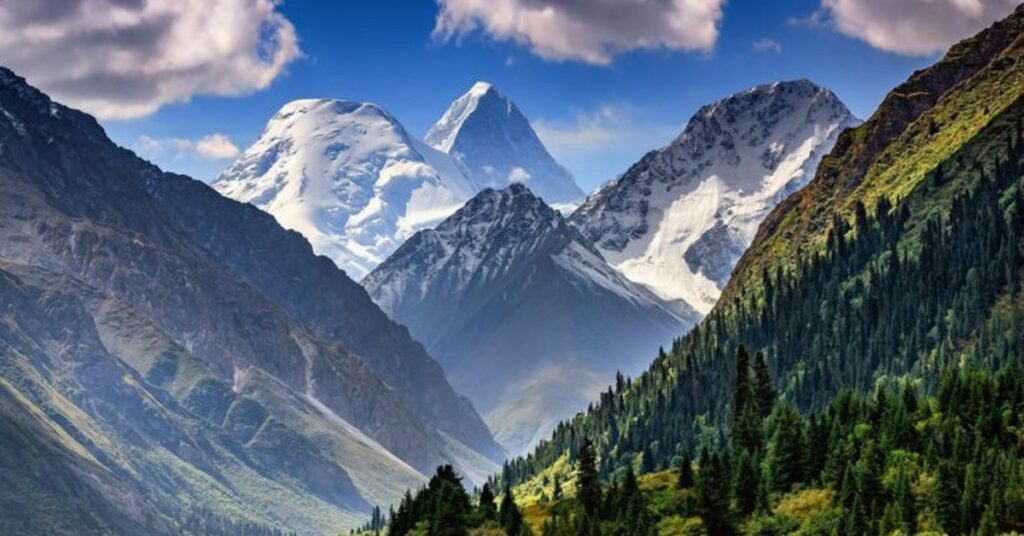
Itinerary:
Departure is the final step of your journey, where you’ll be transferred from your accommodation or base camp to the airport or onward travel point.
As you leave the stunning landscapes behind, take a moment to reflect on the unforgettable experiences, breathtaking views, and the adventures you’ve had in Kazakhstan.
We wish you a smooth and pleasant journey as you depart with lasting memories of your time in this beautiful region.
Climb Khan Tengri
Our highlights


